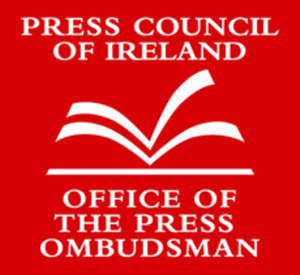In the summer of 1940, following the fall of France to the Germans, thousands of young men enlisted in the Irish Army to defend their land against aggression, training at the Curragh and then being deployed to military barracks around the country.
The Department of Defence took control of unoccupied mansions, including Desert House and Castlemorris, both near Callan. At these military hotspots, many a love-hungry girl met her future husband, or at least a temporary boyfriend.
Seamus O’ Brien had a vivid recollection of Callan entrepreneur Vincent Lanigan doing a thriving business in sales of prams, re-usable nappies, and baby’s milk bottles once the romance started to blossom at Desert.
To supplement the valiant efforts of the Army and Navy, a nationwide civilian emergency service, the LSF- Local Security Force- was formed. Civilians of all ages rallied to join this force, including Seamus O’ Brien and, later in the war, the legendary Sean Holden.
The LSF operated under the auspices of the Department of Justice. New volunteers signed on at their local Garda stations. The force was divided into two distinct groups, A and B. The age limit for Group A members was eighteen, and these recruits would eventually be given weapons and live ammunition. Group B consisted mainly of men in their forties and fifties, although much older volunteers could be found in its ranks.
The “B” men were to assist in reconnaisance operations and the Department planned to deploy them to help the Red Cross in the event of the Nazis or the British invading.
The LSF was well structured, at least in theory, with group and section leaders appointed in all districts. Every group leader had special assistants and an adjutant. These held various officer rankings. The section leaders were more or less equivalent to the junior officers in the regular Army.
All the leaders were supposedly vetted by the Gardai to ensure that none of them had links with subversive organisations. The post-Treaty IRA was active at the time, believed to be sympathetic to Germany, and the Government feared it might acquire weapons from LFS personnel.
Leaders were also chosen for their previous military experience, whether gleaned from the War of Independence or in the trenches with the British army.
Edward Halley of Ballywalters was selected as Callan Group Leader and James O’ Carroll of West Street appointed his Assistant GL.
Paddy Funchion of Bridge Street became Adjutant. The local Section Leaders were: Dick Power, Westcourt; Alec Keating, Coolagh Road; and Michael Power, Haggardsgreen.
Other section leaders appointed in the district were Bob Kennedy (SL Ahenure ), Jim Burke (SL Coolagh ), and Paddy Cody (SL Ballyline ).
Seamus O’Brien applied to join the LSF on September 23 1940. With butterflies in his stomach, for he had no idea what challenges lay ahead, he entered Callan Garda station. His biggest worry was that he would be rejected as he was only “17 and a bit”, a few months short of the required admittance age of 18.
In the dayroom he found a beaming Sergeant Kilroy, seated with his legs up on a table and a steaming mug of tea or soup clasped in his hands. Garda Mick Jennings was conversing with a farmer about a sow that had gone missing at Prologue and was worrying locals.
Knowing O’Brien’s age, the sergeant gave a sigh, shook his head, and exclaimed: “I’m afraid Seamus, you might be missing all the excitement. Ah, I wonder, would you ever do a little job for me?” He went on to hint that the age problem could be overlooked, but he needed a nice new sideboard to please the wife.
When O’Brien agreed to apply his carpentry skills to make one, the sergeant suddenly had no problem with the lad’s age. He handed O’Brien the papers to sign and gave him his LSF membership card.
This had the following conditions printed in bold type:
1. This card is to be produced on the demand of a member of the Defence Forces or the Gardai Siochana.
1. If lost, its loss should be immediately reported to the Garda station by which it was issued.
1. If this card is found it should be handed in at the nearest Garda station.
1. When a member severs his connection with the LSF this card will be handed into the station of issue.
1. This card is to be carried when on duty and should be preserved in a pocket book or envelope.
O’Brien hadn’t to wait long for his initiation into the LSF. He and about 80 other local men and boys assembled at Callan Courthouse on the night after his enrolment. An officer informed them that they would be required to meet twice weekly, on Tuesdays and Fridays, at Callan Courthouse at 8 pm sharp.
The officer commenced a roll call. O’Brien, observing the reaction of ex-British army veterans and former IRA men, clicked his heels when his name was called and shouted “Sir” at the top of his voice. The officer instructed the men to walk to the disused workhouse at Prologue.
Standing in a large square in the grounds of the building, the O’Brienvolunteers were divided into four groups: former members of the regular army, Old IRA guerrilla fighters, veterans of the First World War, and fellows who, like O’Brien, had no past experience of military life…
To be continued…
Extract from Are We Invaded Yet? by John Fitzgerald
Picture one: This shows Philip Lynch, of Callan Heritage Society, who as a child witnessed soldiers shooting livestock on his father’s farm during the wartime Foot and Mouth outbreak in County Kilkenny. Here Philip is showing Carmel Burke how to use a bazooka.
Picture two:
Sis and Mary Breen of Clashbeg (1940s )
Picture three:
Army, LDF and civilians, including many Co Kilkenny soldiers, marching during “Step Together Week” in May 1943 at New Ross.
